#Oweynagat Cave
Text
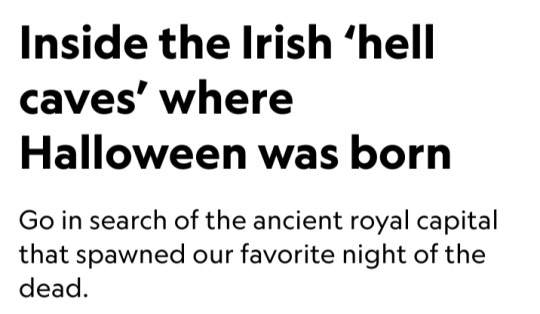

Story and photographs by Ronan O’Connell
September 26, 2023
In the middle of a field in a lesser known part of Ireland is a large mound where sheep wander and graze freely.
Had they been in that same location centuries ago, these animals might have been stiff with terror, held aloft by chanting, costumed celebrants while being sacrificed to demonic spirits that were said to inhabit nearby Oweynagat cave.
This monumental mound lay at the heart of Rathcroghan, the hub of the ancient Irish kingdom of Connaught.
The former Iron Age center is now largely buried beneath the farmland of County Roscommon.
In 2021, Ireland applied for UNESCO World Heritage status for Rathcroghan (Rath-craw-hin). It remains on the organization's tentative list.

Rooted in lore
Spread across more than two square miles of rich agricultural land, Rathcroghan encompasses 240 archaeological sites, dating back 5,500 years.
They include burial mounds, ring forts (settlement sites), standing stones, linear earthworks, an Iron Age ritual sanctuary — and Oweynagat, the so-called gate to hell.
More than 2,000 years ago, when Ireland’s communities seem to have worshipped nature and the land itself, it was here at Rathcroghan that the Irish New Year festival of Samhain (SOW-in) was born, says archaeologist and Rathcroghan expert Daniel Curley.
In the 1800s, the Samhain tradition was brought by Irish immigrants to the United States, where it morphed into the sugar overload that is American Halloween.
Dorothy Ann Bray, a retired associate professor at McGill University and an expert in Irish folklore, explains that pre-Christian Irish divided each year into summer and winter.
Within that framework were four festivities.
Imbolc, on February 1, was a festival that coincided with lambing season.
Bealtaine, on May 1, marked the end of winter and involved customs like washing one’s face in dew, plucking the first blooming flowers, and dancing around a decorated tree.
August 1 heralded Lughnasadh, a harvest festival dedicated to the god Lugh and presided over by Irish kings.
Then on October 31 came Samhain, when one pastoral year ended and another began.
Rathcroghan was not a town, as Connaught had no proper urban centers and consisted of scattered rural properties.
Instead, it was a royal settlement and a key venue for these festivals.
During Samhain, in particular, Rathcroghan was a hive of activity focused on its elevated temple, which was surrounded by burial grounds for the Connachta elite.
Those same privileged people may have lived at Rathcroghan. The remaining lower-class Connachta communities resided in dispersed farms and descended on the site only for festivals.
At those lively events they traded, feasted, exchanged gifts, played games, arranged marriages, and announced declarations of war or peace.
Festivalgoers also may have made ritual offerings, possibly directed to the spirits of Ireland’s otherworld.
That murky, subterranean dimension, also known as Tír na nÓg (Teer-na-nohg), was inhabited by Ireland’s immortals, as well as a myriad of beasts, demons, and monsters.
During Samhain, some of these creatures escaped via Oweynagat cave (pronounced “Oen-na-gat” and meaning “cave of the cats”).
“Samhain was when the invisible wall between the living world and the otherworld disappeared,” says Mike McCarthy, a Rathcroghan tour guide and researcher who has co-authored several publications on the site.
“A whole host of fearsome otherworldly beasts emerged to ravage the surrounding landscape and make it ready for winter.”
Thankful for the agricultural efforts of these spirits but wary of falling victim to their fury, the people protected themselves from physical harm by lighting ritual fires on hilltops and in fields.
They disguised themselves as fellow ghouls, McCarthy says, so as not to be dragged into the otherworld via the cave.
Despite these engaging legends — and the extensive archaeological site in which they dwell — one easily could drive past Rathcroghan and spot nothing but paddocks.
Inhabited for more than 10,000 years, Ireland is so dense with historical remains that many are either largely or entirely unnoticed.
Some are hidden beneath the ground, having been abandoned centuries ago and then slowly consumed by nature.
That includes Rathcroghan, which some experts say may be Europe’s largest unexcavated royal complex.
Not only has it never been dug up, but it also predates Ireland’s written history.
That means scientists must piece together its tale using non-invasive technology and artifacts found in its vicinity.
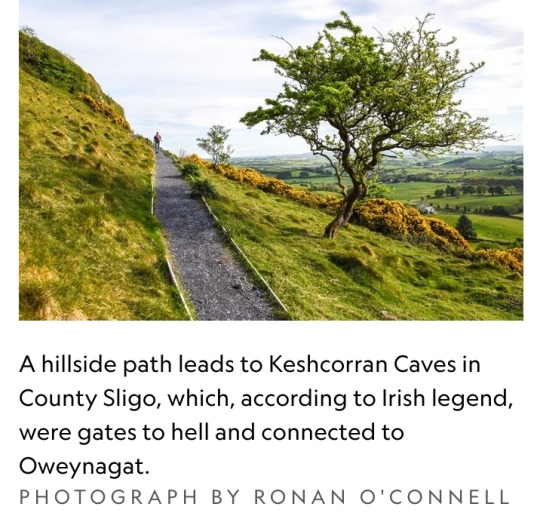
While Irish people for centuries knew this site was home to Rathcroghan, it wasn’t until the 1990s that a team of Irish researchers used remote sensing technology to reveal its archaeological secrets beneath the ground.
“The beauty of the approach to date at Rathcroghan is that so much has been uncovered without the destruction that comes with excavating upstanding earthwork monuments,” Curley says.
“[Now] targeted excavation can be engaged with, which will answer our research questions while limiting the damage inherent with excavation.”
Becoming a UNESCO site
This policy of preserving Rathcroghan’s integrity and authenticity extends to tourism.
Despite its significance, Rathcroghan is one of Ireland’s less frequented attractions, drawing some 22,000 visitors a year compared with more than a million at the Cliffs of Moher.
That may not be the case had it long ago been heavily marketed as the “Birthplace of Halloween,” Curley says.
But there is no Halloween signage at Rathcroghan or in Tulsk, the nearest town.
Rathcroghan’s renown should soar, however, if Ireland is successful in its push to make it a UNESCO World Heritage site.
The Irish Government has included Rathcroghan as part of the “Royal Sites of Ireland,” which is on its newest list of locations to be considered for prized World Heritage status.
The global exposure potentially offered by UNESCO branding would likely attract many more visitors to Rathcroghan.
But it seems unlikely this historic jewel will be re-packaged as a kitschy Halloween tourist attraction.
“If Rathcroghan got a UNESCO listing and that attracted more attention here that would be great, because it might result in more funding to look after the site,” Curley says.
“But we want sustainable tourism, not a rush of gimmicky Halloween tourism.”
Those travelers who do seek out Rathcroghan might have trouble finding Oweynagat cave.
Oweynagat is elusive — despite being the birthplace of Medb, perhaps the most famous queen in Irish history, 2,000 years ago.
Barely signposted, it’s hidden beneath trees in a paddock at the end of a one-way, dead-end farm track, about a thousand yards south of the much more accessible temple mound.
Visitors are free to hop a fence, walk through a field, and peer into the narrow passage of Oweynagat.
In Ireland’s Iron Age, such behavior would have been enormously risky during Samhain, when even wearing a ghastly disguise might not have spared the wrath of a malevolent creature.
Two millennia later, most costumed trick-or-treaters on Halloween won’t realize they’re mimicking a prehistoric tradition — one with much higher stakes than the pursuit of candy.
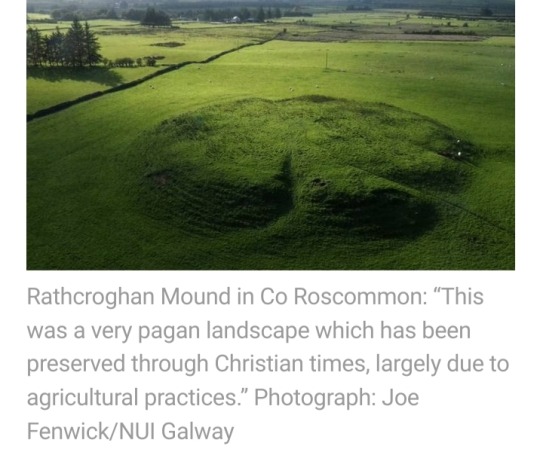
#Rathcroghan#Connaught#County Roscommon#UNESCO World Heritage#Samhain#Imbolc#Bealtaine#Lughnasadh#Tír na nÓg#Oweynagat cave#Ireland#remote sensing technology#Birthplace of Halloween#Halloween#Royal Sites of Ireland#Halloween tourism#Medb#Oweynagat#Iron Age#Irish history#archaeological site
85 notes
·
View notes
Text

The unassuming entrance to Oweynagat cave, in Rathcroghan, Ireland, belies its central role in ancient Irish history. It‘s known as a gateway to the demon-filled underworld and the birthplace of the Samhain festival, the traditional roots of Halloween. In 2021, Ireland applied for UNESCO World Heritage status for the archaeological site. Photograph By Ronan O'Connell
Inside The Irish ‘Hell Caves’ Where Halloween Was Born
Go in search of the ancient royal capital that spawned our favorite night of the dead.
— Story and Photographs By Ronan O'Connell | September 26, 2023
In the middle of a field in a lesser known part of Ireland is a large mound where sheep wander and graze freely. Had they been in that same location centuries ago, these animals might have been stiff with terror, held aloft by chanting, costumed celebrants while being sacrificed to demonic spirits that were said to inhabit nearby Oweynagat cave.
This monumental mound lay at the heart of Rathcroghan, the hub of the ancient Irish kingdom of Connaught. The former Iron Age center is now largely buried beneath the farmland of County Roscommon. In 2021, Ireland applied for UNESCO World Heritage status for Rathcroghan (Rath-craw-hin). It remains on the organization's tentative list.

The current archaeological site of Rathcroghan displays an artist’s impression of the temple that once stood there. It was the main meeting place of the Connaught kingdom 2,000 years ago. Photograph By Ronan O'Connell
Rooted in Lore
Spread across more than two square miles of rich agricultural land, Rathcroghan encompasses 240 archaeological sites, dating back 5,500 years. They include burial mounds, ring forts (settlement sites), standing stones, linear earthworks, an Iron Age ritual sanctuary—and Oweynagat, the so-called gate to hell.
More than 2,000 years ago, when Ireland’s communities seem to have worshipped nature and the land itself, it was here at Rathcroghan that the Irish New Year festival of Samhain (SOW-in) was born, says archaeologist and Rathcroghan expert Daniel Curley. In the 1800s, the Samhain tradition was brought by Irish immigrants to the United States, where it morphed into the sugar overload that is American Halloween.
Dorothy Ann Bray, a retired associate professor at McGill University and an expert in Irish folklore, explains that pre-Christian Irish divided each year into summer and winter. Within that framework were four festivities. Imbolc, on February 1, was a festival that coincided with lambing season. Bealtaine, on May 1, marked the end of winter and involved customs like washing one’s face in dew, plucking the first blooming flowers, and dancing around a decorated tree. August 1 heralded Lughnasadh, a harvest festival dedicated to the god Lugh and presided over by Irish kings. Then on October 31 came Samhain, when one pastoral year ended and another began.
Rathcroghan was not a town, as Connaught had no proper urban centers and consisted of scattered rural properties. Instead, it was a royal settlement and a key venue for these festivals. During Samhain, in particular, Rathcroghan was a hive of activity focused on its elevated temple, which was surrounded by burial grounds for the Connachta elite.
Those same privileged people may have lived at Rathcroghan. The remaining, lower-class Connachta communities resided in dispersed farms and descended on the site only for festivals. At those lively events they traded, feasted, exchanged gifts, played games, arranged marriages, and announced declarations of war or peace.

Festivalgoers also may have made ritual offerings, possibly directed to the spirits of Ireland’s otherworld. That murky, subterranean dimension, also known as Tír na nÓg (Teer-na-nohg), was inhabited by Ireland’s immortals, as well as a myriad of beasts, demons, and monsters. During Samhain, some of these creatures escaped via Oweynagat cave (pronounced “Oen-na-gat” and meaning “cave of the cats”).
“Samhain was when the invisible wall between the living world and the otherworld disappeared,” says Mike McCarthy, a Rathcroghan tour guide and researcher who has co-authored several publications on the site. “A whole host of fearsome otherworldly beasts emerged to ravage the surrounding landscape and make it ready for winter.”
Thankful for the agricultural efforts of these spirits but wary of falling victim to their fury, the people protected themselves from physical harm by lighting ritual fires on hilltops and in fields. They disguised themselves as fellow ghouls, McCarthy says, so as not to be dragged into the otherworld via the cave.
Despite these engaging legends—and the extensive archaeological site in which they dwell—one easily could drive past Rathcroghan and spot nothing but paddocks. Inhabited for more than 10,000 years, Ireland is so dense with historical remains that many are either largely or entirely unnoticed. Some are hidden beneath the ground, having been abandoned centuries ago and then slowly consumed by nature.
That includes Rathcroghan, which some experts say may be Europe’s largest unexcavated royal complex. Not only has it never been dug up, but it also predates Ireland’s written history. That means scientists must piece together its tale using non-invasive technology and artifacts found in its vicinity.

A hillside path leads to Keshcorran Caves in County Sligo, which, according to Irish legend, were gates to hell and connected to Oweynagat. Photograph By Ronan O'Connell
While Irish people for centuries knew this site was home to Rathcroghan, it wasn’t until the 1990s that a team of Irish researchers used remote sensing technology to reveal its archaeological secrets beneath the ground.
“The beauty of the approach to date at Rathcroghan is that so much has been uncovered without the destruction that comes with excavating upstanding earthwork monuments,” Curley says. “[Now] targeted excavation can be engaged with, which will answer our research questions while limiting the damage inherent with excavation.”

Becoming a UNESCO Site
This policy of preserving Rathcroghan’s integrity and authenticity extends to tourism. Despite its significance, Rathcroghan is one of Ireland’s less frequented attractions, drawing some 22,000 visitors a year compared with more than a million at the Cliffs of Moher. That may not be the case had it long ago been heavily marketed as the “Birthplace of Halloween,” Curley says. But there is no Halloween signage at Rathcroghan or in Tulsk, the nearest town.
Rathcroghan’s renown should soar, however, if Ireland is successful in its push to make it a UNESCO World Heritage site. The Irish Government has included Rathcroghan as part of the “Royal Sites of Ireland,” which is on its newest list of locations to be considered for prized World Heritage status. The global exposure potentially offered by UNESCO branding would likely attract many more visitors to Rathcroghan.
But it seems unlikely this historic jewel will be re-packaged as a kitschy Halloween tourist attraction. “If Rathcroghan got a UNESCO listing and that attracted more attention here that would be great, because it might result in more funding to look after the site,” Curley says. “But we want sustainable tourism, not a rush of gimmicky Halloween tourism.”
Those travelers who do seek out Rathcroghan might have trouble finding Oweynagat cave. Oweynagat is elusive—despite being the birthplace of Medb, perhaps the most famous queen in Irish history, 2,000 years ago. Barely signposted, it’s hidden beneath trees in a paddock at the end of a one-way, dead-end farm track, about a thousand yards south of the much more accessible temple mound.
Visitors are free to hop a fence, walk through a field, and peer into the narrow passage of Oweynagat. In Ireland’s Iron Age, such behavior would have been enormously risky during Samhain, when even wearing a ghastly disguise might not have spared the wrath of a malevolent creature.
Two millennia later, most costumed trick-or-treaters on Halloween won’t realize they’re mimicking a prehistoric tradition—one with much higher stakes than the pursuit of candy.
#World Heritage#History | Culture#Ronan O'Connell#Ireland 🇮🇪#UNESCO#Oweynagat Cave#County Roscommon#UNESCO | World Heritage Status | Rathcroghan (Rath-Craw-Hin)
0 notes
Text
Oweynagat Cave from Monumental Ireland



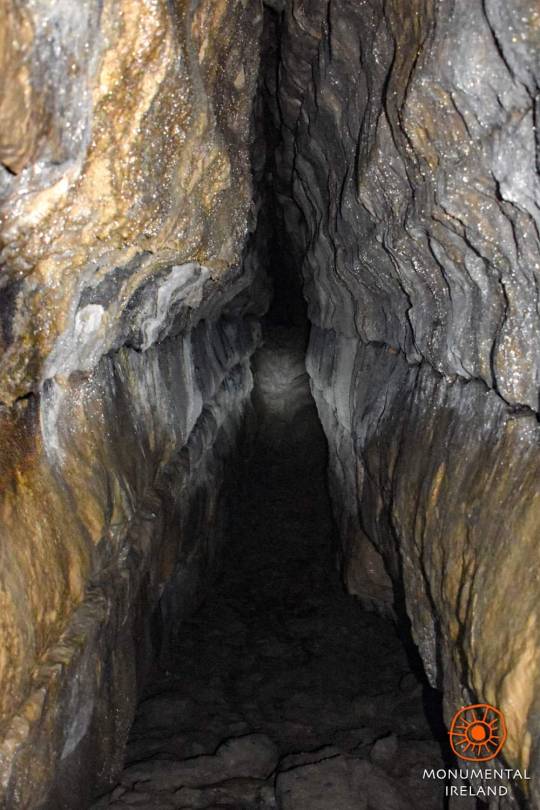
"Within the ritual landscape of Rathcroghan, the ancient royal capital of Connacht, amongst the earthen mounds and ceremonial enclosures, there is an even more ancient place, a place not made by mortals.
Oweynagat, (Uaimh na gCat meaning ‘Cave of the Cats’) is an underground cavern (37m long, 2.5m wide, descending 7m below the ground) created by a fissure in the limestone bedrock. In ancient times, this rift into the earth below was considered to be an entrance to the ‘otherworld’.
In mythology it is called ‘Uaimh Cruachan’ (Crochan’s Cave) or ‘Síd Cruachan’ (Crochan’s (otherworld) Abode). Named after Crochan Crogderg, (meaning ‘blood-red cup’), a mythical character who gives her name to the ancient capital itself: Rathcroghan (meaning ‘the fort of Crochan’).
According to the Dindshenchas (Lore of Places), Crochan was handmaiden to Queen Étaíne and accompanied her mistress when she fled from her husband the High King, with her fairy lover, Midir.
While on the run they stayed at Oweynagat; which, according to the text, is a sort of otherworldly palace. Crochan was so enamoured with the cave/palace that she was granted it by Midir and it was here that Crochan later gave birth to a daughter, Medb, the mythical queen of Connacht.
Access to the cave is though a 10m long dry-stone passageway (souterrain) built in the Early Medieval Period (600-800AD). There is a lintel stone over the entrance with an Ogham inscription that reads VR��ICCI/ MAQI MEDVVI 'of Fráoch, son of Medb’. Although it cannot be proven that this inscription refers to Medb, legendary Queen of Connacht, it is hardly coincidental that the name is found here at her traditional birthplace.
The type of Ogham script in which the name is written indicates a pre-6th Century date, making it the earliest written reference to the mythical queen. Also ‘Fráoch’ was a character from the Táin who was married to Medb’s daughter, Findabair.
Although the name ‘Oweynagat’ is usually translated as ‘the cave of the cats’ (Uaimh na gCat), it may actually be a mis-translation of ‘Uaimh na Cath’ meaning ‘the cave of battle’ . A perhaps more fitting title, given the caves association with The Morrígan, the goddess of battle and strife from Irish mythology, who was also said to have resided there.
According to legend, each Samhain (Halloween), The Morrígan would emerge from the cave on a chariot, driving her fearsome otherworldly beasts out to ravage the surrounding landscape and make it ready for Winter.
“The horrid Morrígan, out of the cave of Cruachu, her fit abode, came”… (Odras - Metrical Dindshenchas)
A poem, entitled Odras, in the Metrical Dindshenchas, explains that Odras , wife of Buchat, lord of cattle, refused to let one of her cows mate with a bull owned by the Morrígan. When the Morrígan came and stole the cow, Odras followed her to Oweynagat.
However, upon arrival at the cave, Odras fell into a deep enchanted sleep. The Morrigan then cast a spell, transforming poor Odras into a river/stream which then bore her name (thought to be the River Boyle).
It was folk tales such as these that led early christian writers to describe Oweynagat as ‘Ireland’s Gate to Hell’.
These days, the best way to visit the cave is via the Rathcrogan Visitor Centre in Tulsk. They provide guided tours of the whole Rathcroghan complex, including a visit to Oweynagat... Along with a brilliant bookshop, and an excellent All-Day Breakfast."
29 notes
·
View notes
Photo
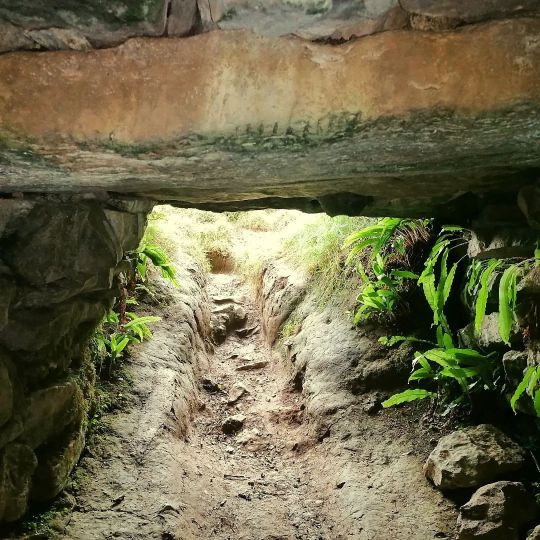
Entrance to Oweynagat Cave with Ogham incription 'of Fróech, son of Medb'. I found it a very content peaceful energy that felt of life. https://www.instagram.com/p/Chtxx3QjLlqsR7ko9OGV_sIYsR4bkxPB4iABGU0/?igshid=NGJjMDIxMWI=
0 notes
Photo
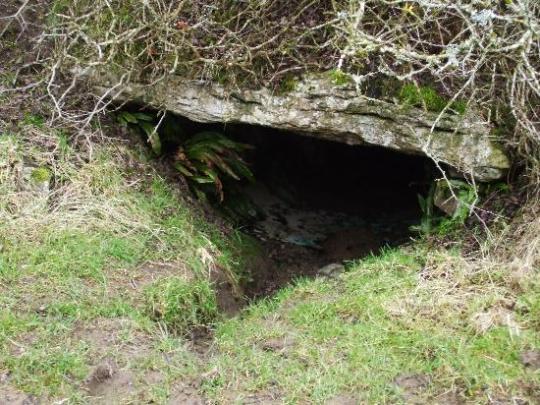
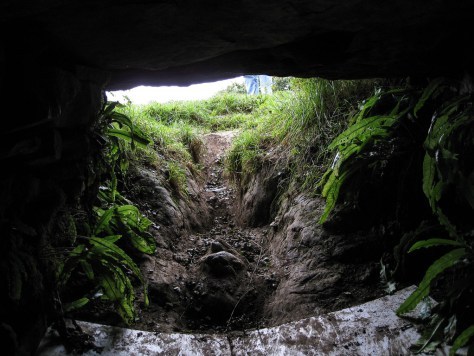
Oweynagat, also called “The Cave of Cats” is a kistvaen which serves as a portal to the Otherworld in Irish folklore and from which various destructive creatures emerge during Samhain (pronounced SAH-win, the Gaelic festival marking the end of the summer harvest season and one of the progenitors to our modern celebrations of Halloween). It is located at Rathcroghan, a complex of archaeological sites in Ireland and typically just called the Cruachan.
One such creature is the Ellen Trechen, some kind of 3-headed monster that supposedly rampaged across the country and was killed by Irish mythological hero Amergin. Other creatures include flocks of small red birds that wither every plant they touch, and a herd of pigs with similar powers.
Though perhaps the most famous creature is The Morrigan (also known as Morrigu, or “the Phantom Queen”). It’s unclear on what exactly she is, but often times she’s believed to be a manifestation of the Gaelic goddess of the Earth and Sovereignty. Other times she’s one third of a triumvirate of beings that are both three individuals and one whole. In most cases though, she’s simply an omen of doom and death, particularly in battle, and often appears as a crow, with one singular exception. On Samhain she emerges from the Oweynagat in a flaming chariot pulled by a one-legged chestnut-coloured horse and a company of creatures, often the kinds already mentioned above.
#Oweynagat#the cave of cats#kitvaen#ireland#Samhain#Gaelic#Rathcroghan#Cruachan#Ellen Trechen#The Morrigan#Morrigu#The Phantom Queen#caves#stones#rocks#folklore#irish folklore#Halloween Theme Month
645 notes
·
View notes
Link
#uaimh na gcat cave#the morrigan#the sidhe#mt. errigal#Ireland#tuatha de danann#Grianán of Aileach#oweynagat#spiritual initiatio#initiation with the sidhe#faery#the Otherworld#theravenandthelotus
0 notes
Text
Went to Rathcroghan today with some classmates and and got a lil guided tour of the rath as well as a summary of the Táin Bo Cúailnge!!! I also was one of the few who decided to go into Oweynagat cave, aka a portal to the Other World that opens during Samhain and it was incredibly Mud but also incredibly Cool (and I succeeded in getting minimum mud on myself).
Fun fact: Oweynagat means the Cave of Cats and look who we met on the way there
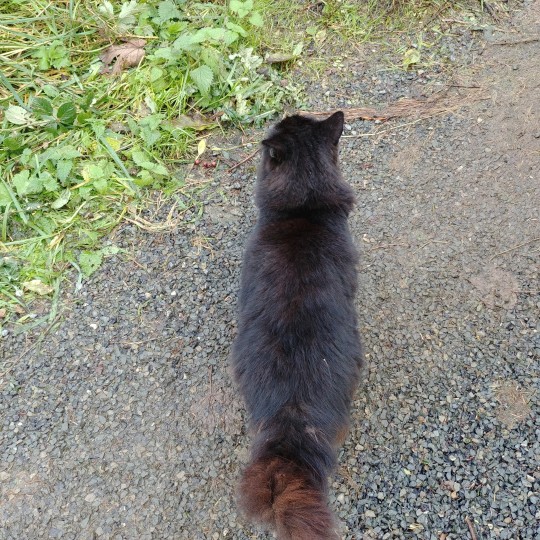
Other fun fact: my classmates said that since I emerged out of the cave/land, and that the land is Queen Medb's body, Queen Medb is now my mom ✌
23 notes
·
View notes
Text
BROTHER BEASTUS 𖤐 GRIMOIRE

🐈⬛ Birthplace of Samhain & Inspiration for Halloween: Ireland’s Ancient Oweynagat ‘Cave of Cats’
📕 The Satanic Coloring Book by Jason Lenox
🍑 ‘World’s Oldest Porn’ is Queer & Gender Non-Conforming: people 3000 years ago had a lot fewer hangups…. & More…
Follow & see it first every other Fri. 15 Oct 2021: https://beastus666.substack.com/p/cave-of-cats-irelands-samhain-satanic
25 notes
·
View notes
Photo
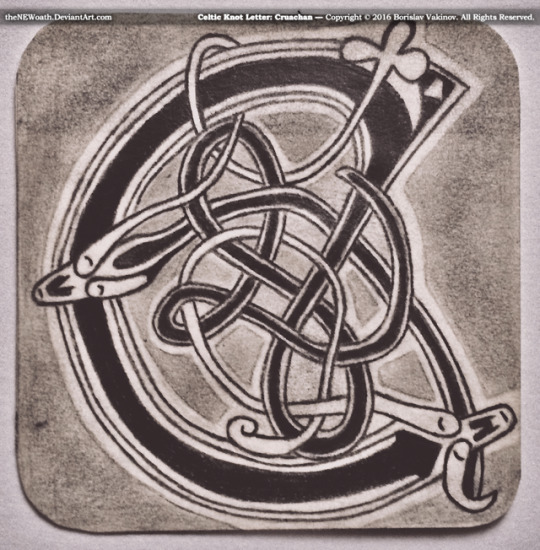
Celtic Knot Letter - The Cruachan logo
Pencil on a sticky note. I am not kidding!! :) I wanted to make a bookmark inspired by the logo of the Irish lads from Cruachan and I just had one of them sticky notes flying around. Here's what came out of it. I quite like it. I use it for my books. It's quite handy too.
The Band
Cruachan is a folk metal band from Dublin, Ireland that has been active since the 1990s. They have been acclaimed as having "gone the greatest lengths of anyone in their attempts to expand" the genre of folk metal.They are recognised as one of the founders of the genre of folk metal. With a specific focus on Celtic music and the use of Celtic mythology in their lyrics, Cruachan's style of folk metal is known as Celtic metal. The band named themselves after the archaeological site of Rathcroghan in Ireland also known as Cruachan.
Rathcroghan (megaliths)
Rathcroghan (Irish: Ráth Cruachan, meaning "fort of Cruachan") is a complex of archaeological sites near Tulsk in County Roscommon, Ireland. It is identified as the site of Cruachan, the traditional capital of the Connachta, a term used to describe the prehistoric and early historic rulers of the western territory. The Rathcroghan Complex (Crúachan Aí) is a unique archaeological landscape with many references found in early Irish medieval manuscripts.
Located on the plains of Connacht (Mag nAí/Machaire Connacht), Rathcroghan is one of the six Royal Sites of Ireland. This landscape which extends over six square kilometres, consists of 240 plus archaeological sites, sixty of which are protected national monuments.
These monuments range from the Neolithic (4000 - 2500 BC), through the Bronze (2500 - 500 BC) and Iron Age (500 BC - 400 AD), to the early medieval period and beyond. These monuments include burial mounds, ringforts and medieval field boundaries amongst others. The most fascinating of these are the multi period Rathcroghan Mound, the mysterious cave of Oweynagat, the Mucklaghs - a spectacular set of linear earthworks, as well as the Carns medieval complex.
There are many interesting historic references to Rathcroghan (Ráth Crúachan) recorded in early medieval manuscripts, including the 12th century Lebor na hUidre. Rathcroghan is recorded as the location of one of the great fairs of Ireland, as well as being one of the island's three great heathen cemeteries. It is also the location for the beginning and end of a national epic tale – an Táin Bó Cuailnge, and the royal seat of Medb (Maeve), Connacht's Warrior Queen.
Uniquely, Rathcroghan possesses an entrance to the Otherworld, described in the medieval period as "Ireland's Gate to Hell", located at Oweynagat (the Cave of the Cats). The cave has associations with the pagan festival of Samhain, Halloween, as well as being described as the "fit abode" of Morrigan, a Celtic Goddess of pre-Christian Ireland.
https://en.wikipedia.org/wiki/Cruachan_(band)
https://en.wikipedia.org/wiki/Rathcroghan
© Borislav Vakinov
#celtic art#cruachan#ireland#celts#folk metal#celtic knots#paganism#rathcroghan#heathenry#calligraphy
4 notes
·
View notes
Text
I found an episode of Ghost Adventures where they go into the Morrigan’s cave (Oweynagat/cave of cats). and there’s this entire scene where the guys are getting blessed by a ~real pagan priest~. The camera like, paaaans over and focuses on Lora OBrien’s face and she just makes this comment about hoping they’ll be okay with kind of a shrug and like.
That entire scene just gives me LIFE.
29 notes
·
View notes
Text
Midir, Samhain and The Morrigan
(Disclaimer... I'm just rambling, I wouldn't quote me on any of this!)
Off I go again spouting the importance of a lesser known member of the Tuatha de Dannan. Midir is mostly known for his part in the epic The Wooing of Etain, he doesn't even make the cut for the title of the story, but Midir is more than a lovestruck, jealous male, Midir weaves his way through many stories if you are willing to search for him. If you consider the stories as a study of the landscape rather than entities flitting in an out of love with each other it is interesting how his first wife Fuamnach can control the wind and his second is found at a river while he can appear as anyone or any breathing entity he wants. Perhaps that's a post for another day. Today I want to talk about Midir and Samhain or Halloween as it is more widely known and his possible connections to the powerful Morrigan.
Although we don't know, or are not directly told, who the mother of Midir is I have for a long time now felt she is the lady the Dagda met but once a year. Of course I'm just guessing, but it's all guesswork and no doubt if I'm getting it wrong he will enjoy that as it adds another veil to his truth. Thinking of his characteristics in his main story, he is spoken of as a wise judge at first, a noble being, one who fosters many children and cares for his people, he displays many of the traits of his father The Dagda and when he is scorned his judgement is ruled by strong emotion and he acts definitely if somewhat rashly yet still cleverly and he doesn't give up. He is a master of disguise and shapeshifting, all traits of The Morrigan.
Midir is said to guard the veil between The Otherworld and ours with an entry in his Sidhe Mound at Brí Leith and in particular at Samhain, yet another reason to imagine his mother being this lady as the once a year she met with The Dagda was Samhain so it would be fitting for their offspring to be a guardian of that time.
Samhain was the time Midir lost the foster son he loved the most, Aenghus as he brought him to claim his place in Brú na Boinne as instructed by The Dagda during this time of peace.
Samhain was also the time Midir lost his heart to another. Wise and fair in his judgements until he went to visit his foster son at Samhain. He lost his judgement when his eye was hit by an arrow, a reference perhaps to the third eye. His vanity ensured he demanded way more than was needed in recompense by asking for Etain after his eye was already healed.
Another link to Midir, The Morrigan and Samhain is the cave of cats or Oweynagat at Rathcroghan. Midir is said to have gifted this cave to Cruacháin, mother of Queen Maeve in an attempt to get her to stay put and let him have her charge, Etain to himself and The Morrigan is said to be present in the cave and most active at Samhain. Did she give him this cave that he handed over so easily to another?
Tlachtga, the Hill of Ward at Athboy in Co Meath has been wrapped up in the story of Midir and Etain on occasion and of course that hill is the most associated with Halloween.
Aside: At one time we were building a house under it's shadow but we ended up under the shadow of Brí Leith instead.
Eochaidh was at the feast in Tara at Samhain when he decided to go look for a wife and that was to be the human Etain. Etain was in Tara with Eochaidh when Midir came to find her during feasting time too..was that Samhain?
Here is an abstract connection to Samhain.. what if Midir's Cranes were An Cailleach's sons and what about that bull with the cranes....
Dressing up at Samhain is a long time tradition and it is thought children were hiding themselves from the Sidhe people by disguising themselves from them but what if it was to honour their ability to change form, in particular Midir, master of disguise, an homage to him and not an avoidance... what if?
Of course none of this is true it's just a fairy tale.
4 notes
·
View notes
Text
The Irish cave known as the entrance into hell — and the birthplace of Halloween
The Irish cave known as the entrance into hell — and the birthplace of Halloween
Oweynagat, Ireland — Ireland has long been the land of fairies and fairy tales. It’s also the home of Halloween.
There is something spooky hidden among these hills. It’s green and lush — almost heavenly — but buried here is a portal to another world, another dimension. Some call it a gate to hell.
“They christened it in one medieval text as Ireland’s door or entrance onto hell,” said Mike…
View On WordPress
0 notes
Text
Though Halloween’s roots are numerous and reflect a multiethnic society, the way it is celebrated now is a distinctly American holiday. But historians say one tradition was more influential than any other: Ireland’s Samhain (pronounced “SOW-in”).
Hell caves, evil fairies and animal sacrifice: Halloween’s intense Irish roots
https://www.washingtonpost.com/history/2021/10/31/irish-hell-caves-halloween-sahmain/
A ghost is projected onto the side of Slane Distillery as part of a Halloween festival called 'Puca' celebrating the Celtic tradition of Samhain in Slane, Ireland, October 22, 2021. (Clodagh Kilcoyne/Reuters)
By Gillian Brockell
Today at 7:00 a.m. EDT
Most cultures have holidays honoring the dead, like the Bon Festival in Japan or Famadihana in Madagascar.
Some include tales of hungry ghosts, like China’s Yue Laan, or evil spirits, like Central Europe’s Perchtenlaufen.
In England, there was even the Mummer’s Night tradition of the lower classes crossdressing and going door-to-door, singing songs, making mischief and demanding “treats,” usually meat or alcohol – but this was more of a Christmas activity. (Christmas used be a literal riot.)
Though Halloween’s roots are numerous and reflect a multiethnic society, the way it is celebrated now is a distinctly American holiday. But there’s one tradition that historians say was more influential than any other: Ireland’s Samhain (pronounced “SOW-in”).
Samhain was the new year celebration observed by the Irish Celts for thousands of years before the arrival of Christianity in the 6th century CE. Literally translated, it means “summer’s end,” according to Lisa Morton, a preeminent Halloween historian and author of several books on the topic.
“It was the end of the warmer, sunnier half of the year for them. As their new year’s celebration, it was a time when they thought the veil between worlds was at its thinnest, and that all kinds of things could cross over on that night,” Morton said in a phone interview. “Those things might be the malicious sídh (pronounced ‘she’) — that was their version of fairies.”
But these were not “Disney fairies” like Tinkerbell, Morton stressed. They were nasty creatures and devils that would cause your crops to whither and might even burn down your house.
Since the Irish Celts were rural and Samhain was often the only time of year large numbers of people would gather in the ancient capital of Rathcroghan, in modern-day County Roscommon, there was also an administrative element. Livestock would be brought in from the fields for winter, and taxes were due to the king.
"We don’t know a lot about it, because the Celts didn’t leave written records,” Morton said. “But we do know from later Catholic missionaries who transcribed things, and some archeological evidence, that they probably celebrated with feasting.”
And at those feasts, animals were sacrificed, and “they told ghost stories, and we have some of those stories, and some of those stories are specific to the hell caves,” Morton said.
The term “hell caves” is probably an early Catholic interpretation of Oweynagat (“Cave of the Cats”), a large cave system just outside Rathcroghan that was believed to be the entrance to the world of mean, nasty fairies. It was from these caves they would emerge on Samhain.
One of these ghost stories was about a hero named Nera, who followed an army of fairies into the otherworld, where it was summertime. Later, after he had escaped, he “proved” to the king his story was true by producing a handful of summer flowers.
“So that cave was a very magical place on Samhain,” Morton said.
Historians on split on when dressing up in scary costumes came into play. In a recent National Geographic exploration of Rathcroghan, researcher Mike McCarthy said the festival-goers also “disguised themselves as fellow ghouls” so they wouldn’t be attacked and dragged into the other world. But Morton isn’t convinced; as with trick-or-treating and haunted houses, she thinks scary costumes started once the holiday had crossed the Atlantic.
So how did it get to America? Well, first it went through the filter of the Catholic Church.
“[Missionaries] had a doctrine at the time that suggested they were more successful if they coopted existing temples and celebrations, rather than trying to destroy them and stamp them out,” Morton explained. “They didn’t have a lot of luck with the Celts and Samhain right off the bat.”
So first, around the 8th century, they moved the Catholic holiday of All Saints Day, originally observed on May 13, to Nov. 1. For the Irish Celts, a new day started at sundown, meaning the evening of Oct. 31. “Hallow” is an old word for holy, and “All Hallows Eve” eventually morphed into the word Halloween.
This first attempt was not very successful, so the church also moved All Souls Day, another observance of the dead, to November 2, around the 11th century. That “seemed to finally do the trick and convert the Celts,” Morton said.
In fact, it was so successful that although there’s scant evidence Celts outside Ireland ever observed Samhain, All Saints Day and All Souls Day expanded across the Celtic Catholic world, including to Scotland and England. (The Church of England put the kibosh on that when it separated from the Catholic Church in the 16th century.)
As Halloween spread, the macabre aspects of Samhain stayed embedded in it.
“Part of the reason that it has survived throughout the centuries is because we like that macabre side of it,” Morton said.
A costumed participant gets ready for a Dia de los Muertos (Day of the Dead) procession hosted by the Southwest Voter Registration Education Project on October 26, 2021, in Los Angeles. (Frederic J. Brown/AFP/Getty Images)
Halloween arrived on our shores in the 1840s with a wave of Irish immigrants pushed out of their home country by the Great Famine. The 19th-century golden age of magazines, particularly women’s magazines, pushed it out of immigrant enclaves and into the broader public.
“Middle-class housewives loved reading stories about quaint, regional celebrations, so the magazines would include these stories about Halloween festivities and parties and so forth, and they caught on,” Morton said.
https://www.washingtonpost.com/history/2021/10/31/irish-hell-caves-halloween-sahmain/
1 note
·
View note
Text
Crazy ass ToG7 theory
Disclaimer - I am not a literature/folklore/history scholar. Nor am I Irish. Part of what follows comes from a ten minute internet search of non-academic sites. Anyone who can add to or correct the Irish mythology, place names, and geography, please let me know! The rest of it is just a long-winded, convoluted mess of a ToG ‘theory’. Listen. This is just for fun. I know this won’t actually happen in ToG7. The odds of me winning the lottery that I never play are better.
Let’s begin. (lol)
So, I’m sitting in on an intro to archaeology class this morning (for work, not as a student) and the professor shows part of a video about bog bodies in Ireland. One of the sites mentioned is Croghan Hill. This caught my attention because it sounded like they were pronouncing it the same way Crochan is pronounced in Throne of Glass.
Back in my office, I look up Croghan Hill and wikipedia tells me it’s in the village of... surprise Croghan (or Cruachán in Irish) in County Offaly, Ireland (Leinster Province).
Then I wondered how Cruachán is pronounced, and found this:
“Cruachán – "kruck-awn"/ "Krooakh-awn"/“kruh-hawn” , a sacred mountain in Roscommon, in province of Connacht, Western Ireland. Home to Queen Maeve and Ailill “

These are two different places. But I gave in and started down the wiki wormhole, which led me here - Rathcroghan (bolding is mine):
“...a complex of archaeological sites near Tulsk in County Roscommon, Ireland. It is identified as the site of Cruachan, the traditional capital of the Connachta, a term used to describe the prehistoric and early historic rulers of the western territory....
...It is also the location for the beginning and end of a national epic tale – an Táin Bó Cuailnge, and the royal seat of Medb (Maeve), Connacht's Warrior Queen.
...Uniquely, Rathcroghan possesses an entrance to the Otherworld, described in the medieval period as "Ireland's Gate to Hell", located at Oweynagat (the Cave of the Cats).
...According to a Dindshenchas poem, Cruachan was named after Crochen, the handmaid of Étaín, a sídhe maiden reborn as a mortal. When Étaín is brought back to the Otherworld by her original sídhe lover Midir, Crochen accompanies them and on their way to Midir's underground palace they spend some time in a mound known as Síd Sinche. Crochen is so impressed by this síd that she asks Midir if this is his palace. Because of her loyalty to Étaín and her respect to this dwelling, Midir gives it to her and names it in her honour before bringing Étaín to his palace at Bri Leith. At the end of the poem Crochen is mentioned as the mother of Medb.
...It is unclear whether what is referred to as the síd is Oweynagat or the mound of Rathcroghan itself. However, it is from Oweynagat that various destructive creatures emerged.”

Now, all of this reminded me of a ridiculous, middle-of-the-night, not-even-half-formed theory I once threw at @propshophannah (sorry @itach-i you had no internet!) about how Maeve might have some serious shit in store for Manon and the witches because we’ve never been told explicitly what the deal is with Manon’s golden, valg-king eyes.
In CoM, I always felt like Baba Yellowlegs was acting weird in the scene with Celaena. She kind of kept looking into her mirrors instead of at Celaena, acting like someone else was listening. Which is possible with witch mirrors since they could be used for communication over long distances. This is pure conjecture on my part.
In HoF, we’re told gold eyes are cherished by the Blackbeaks (but not the other clans apparently???) and Manon has never asked why. It’s implied she is the first to have pure, gold eyes. Manon can sense something off about the valg-possessed though at this point I don’t think she knows what’s wrong.
Also in HoF, when Manon meets the Stygian spiders, the spider says:
“‘Sister,’ the spider mused. ‘I suppose we are sisters, you and I. Two faces of the same dark coin, from the same dark maker. Sisters in spirit if not in flesh.’“
We’re told in this scene that Bluebloods used to worship the spiders.
In QoS, we learn Manon’s eyes are feared by the lesser valg (Erawan never seems to flinch from her though so???). Witches with any amount of gold color in their eyes are able to repel the torture visions valg-Roland uses on them. And of course, she pushed back the valg in Dorian simply by looking at him.
In EoS, Maeve tells Manon she knows her face, most likely because Maeve probably knew or had seen Rhiannon, who Manon looks like.
In ToD, we learn that the spiders, from both continents, are really valg foot soldiers serving valg queen Maeve, who presumably is possessing a fae body (though this last part is not confirmed).
Now, I’m not saying Maeve saw future Manon in her original prophecy about Aelin and deliberately created the witches by forcing some of her valg followers and fae to mate. I’m not saying she made witches to serve as her protectors (like the spiders) against the valg, giving them the ability to sense valg possession in others and an eye color that would repel/protect against lesser valg. Just like I’m not saying the matrons know this and have been working for her and not Erawan this whole time (using witch mirrors to contact her and building a giant weaponized mirror they could turn on Erawan if Maeve told them to).
I’m not saying Manon’s eyes are really the eyes of a valg queen instead of a valg king.
And I’m definitely not saying Maeve has plans to use Manon as a vessel for her valg queen form...
But... yeah.
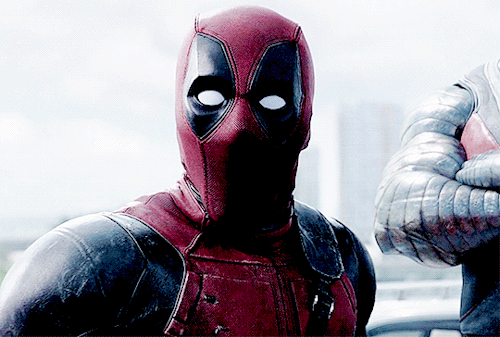
After all that I don’t know where the Crochans fit into this LOL! Maybe they rebelled against Maeve and that’s what the Witch Wars were really about? Also, in terms of this theory, I have no clue why the Blackbeak Matron would have gone along with Erawan’s fucked up “experiments”. Other than she’s just pure evil. Which I think we can all agree on!
#I'm sure there is one line somewhere in one of the books that refutes this entire thing lol#deadpool gif twist at the end!#manon blackbeak#throne of glass#tog#tog theory#tog7#tog7 theory#crochan witches#ironteeth witches#Blackbeak witches#maeve#valg#tod spoilers#tod spoiler
81 notes
·
View notes
Text
How Ireland gave birth to Halloween
How Ireland gave birth to Halloween

A
t the end of a bumpy road, in the middle of an Irish field, I find a cramped entrance to a small cave. This is not what I expected of a so-called “gate to hell”, but a nearby sign confirms this is indeed the location where Halloween was born 2,000 years ago.
These days, Oweynagat cave in County Roscommon is a nondescript, little-visited hole in the ground. To Ireland’s ancient ancestors,…
View On WordPress
0 notes
Text
Oweynagat, the cave of cats, welcomes its first cat (tiger) villager today! welcome to the island, Bianca 🐅
#fern.acnh#marcie moved out so i went nmt hunting and she was on the first island#shes so adorable i could die
0 notes